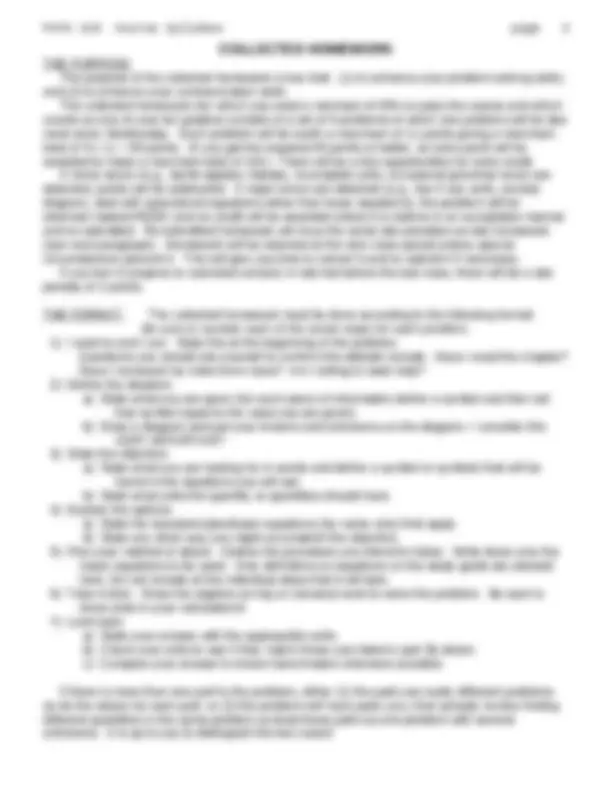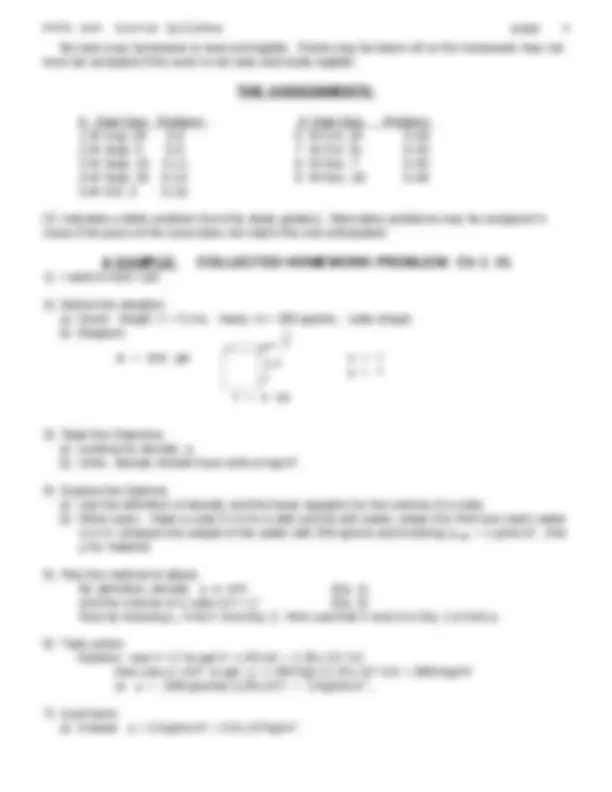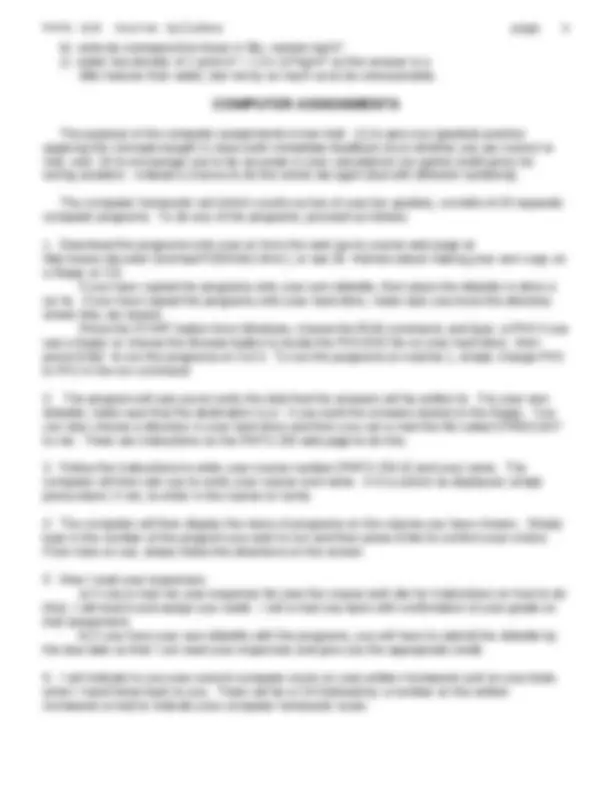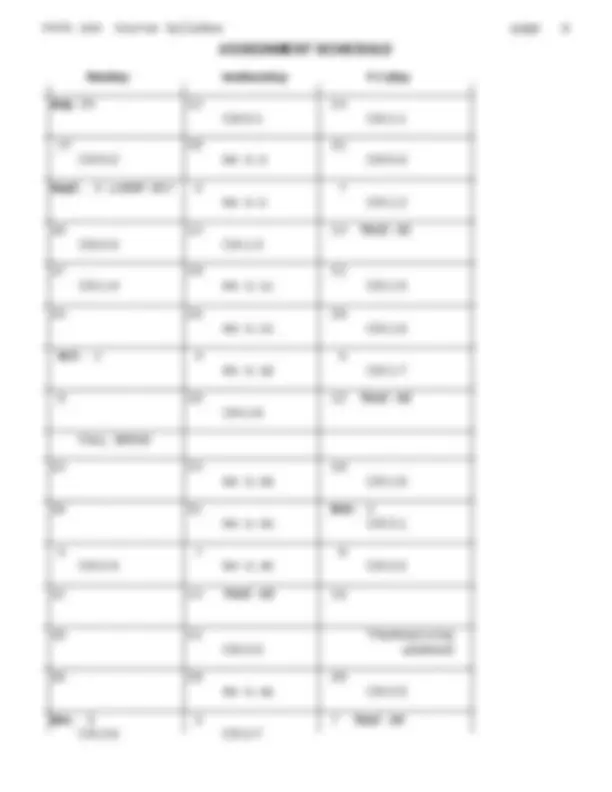







Study with the several resources on Docsity

Earn points by helping other students or get them with a premium plan


Prepare for your exams
Study with the several resources on Docsity

Earn points to download
Earn points by helping other students or get them with a premium plan
Community
Ask the community for help and clear up your study doubts
Discover the best universities in your country according to Docsity users
Free resources
Download our free guides on studying techniques, anxiety management strategies, and thesis advice from Docsity tutors
The syllabus for a college-level physics course, phys 150, offered in the fall of 2007. The course covers topics such as scalars and vectors, kinematics, dynamics, energy and momentum, rotational kinematics and dynamics, and oscillations. The syllabus includes information about the textbook, instructor, prerequisites, course objectives, grading policy, and homework and test schedules.
Typology: Exams
1 / 9

This page cannot be seen from the preview
Don't miss anything!






CATALOG DESCRIPTION: PHYS 150 Physics I A beginning course in physics introducing the topics of scalars and vectors, one and two dimensional kinematics, dynamics including Newton's laws of motion and gravitation, work and energy including the law of conservation of energy, momentum, rotational kinematics, rotational dynamics including angular momentum, and oscillations. Prerequisite: MATH 131. Corequisite: PHYS 150L. TEXT: Physics For Scientists and Engineers/ with Modern Physics, any edition, by Serway INSTRUCTOR: Dr. Johnny B. Holmes, Professor of Physics; office: S202; phone: 321- PREREQUISITES BY TOPIC: Definition of derivative, definition of integration, basic trigonometry, solution of simultaneous equations. GOALS:
average the remaining nine grades. However, if you have less than 65% on the regular collected homework, you will fail the course regardless of your overall average. You must have at least a 65% on the regular collected homework to pass the course. If you do, the following scale will be used with your overall average to determine your final grade: F: 0-65; D: 65-70; C: 70-82; B: 82-93; A: 93-. (Note: 81.9 is not in the B range but is in the C range!) The four tests will consist of problems taken from the homework problems (both collected and uncollected), the computer assignments, and lecture material. The final exam will consist of problems most of which will be similar to those on the previous four tests. For each of the in-class tests you may bring in one 8½" x 11" sheet of paper with anything written on one side that you wish. For the final exam, you may bring in two sheets of paper with writing on one side. All information on the sheets must be hand-written. No duplicated sheets will be permitted, so be sure and make your own! Part of the reason for allowing the sheets is that I consider it a good way to learn the material. Calculators are permitted and even recommended for the tests! However, the sharing of calculators during a test will not be permitted, so come prepared! The uncollected homework problems will not be graded, but you are expected to do them. YOU DO NOT UNDERSTAND THE MATERIAL IF YOU CANNOT DO THE HOMEWORK PROBLEMS! Besides, the test questions will, for the most part, be taken from the uncollected homework problems, and THE TEST WILL BE TOO LONG to do if you come in cold and try to solve the problems for the first time on the test. ABSENCES: I expect you to attend class. The material covered is mostly in the textbook, but the course is based on my lectures and not strictly on the book. You are responsible for all material covered in class and for any test schedule changes announced in class as well as any changes in computer or homework assignments announced in class. As stated above, if you miss more than three classes, I will not drop your lowest test. If you know beforehand that you are going to miss a test, you may request BEFORE the test date that I give you a make-up test BEFORE the regular test date. If for ANY REASON you miss a test, you may make it up but there will be a penalty of 10 points (out of 100) for the extra work it makes for me. If you miss more than one test you must have a reasonable excuse for both missed tests if you wish to be given a make-up test, and there will be an additional penalty of another 10 points. TENTATIVE SCHEDULE FOR TESTS: Day Date Test
Fri. Sept. 14 #1 over Vectors and Basic Motion Fri. Oct. 12 #2 over Newton's Laws Wed. Nov. 14 #3 over Energy and Momentum Fri Dec. 7 #4 over Rotations and Oscillations TBA Final Exam
Be sure your homework is neat and legible. Points may be taken off or the homework may not even be accepted if the work is not neat and easily legible!
1 W Aug. 29 S-3 6 W Oct. 24 S- 2 W Sept. 5 S-5 7 W Oct. 31 S- 3 W Sept. 19 S-11 8 W Nov. 7 S- 4 W Sept. 26 S-14 9 W Nov. 28 S- 5 W Oct. 3 S- [S- indicates a letter problem from the study guides.] Alternative problems may be assigned in class if the pace of the class does not match the one anticipated.
= 5 cm
m = 350 gm V =? =?
b) units do correspond to those in 3b), namely kg/m^3. c) water has density of 1 gm/cm^3 = 1.0 x 103 kg/m^3 so this answer is a little heavier than water, but not by so much as to be unreasonable.
The purpose of the computer assignments is two-fold: (1) to give you (graded) practice applying the concepts taught in class (with immediate feedback as to whether you are correct or not), and (2) to encourage you to be accurate in your calculations (no partial credit given for wrong answers - instead a chance to do the whole set again [but with different numbers]). The computer homework set (which counts as two of your ten grades), consists of 20 separate computer programs. To do any of the programs, proceed as follows:
due disk need # of pts./ prgm total
TOTAL = 200 (with both bonuses 220)
Monday Wednesday Friday Aug 20 22 24 CH 0-1 CH 1- 27 29 31 CH 0-2 RH S-3 CH 0- Sept. 3 LABOR DAY 5 7 RH S-5 CH 1- 10 12 14 Test # CH 0-4 CH 1- 17 19 21 CH 1-4 RH S-11 CH 1- 24 26 28 RH S-14 CH 1- Oct. 1 3 5 RH S-18 CH 1- 8 10 12 Test # CH 1- FALL BREAK 22 24 26 RH S-28 CH 1- 29 31 Nov. 2 RH S-33 CH 2- 5 7 9 CH 2-4 RH S-40 CH 2- 12 14 Test #3 16 19 21 Thanksgiving CH 2-3 weekend 26 28 30 RH S-46 CH 2- Dec. 3 5 7 Test # CH 2-6 CH 2-